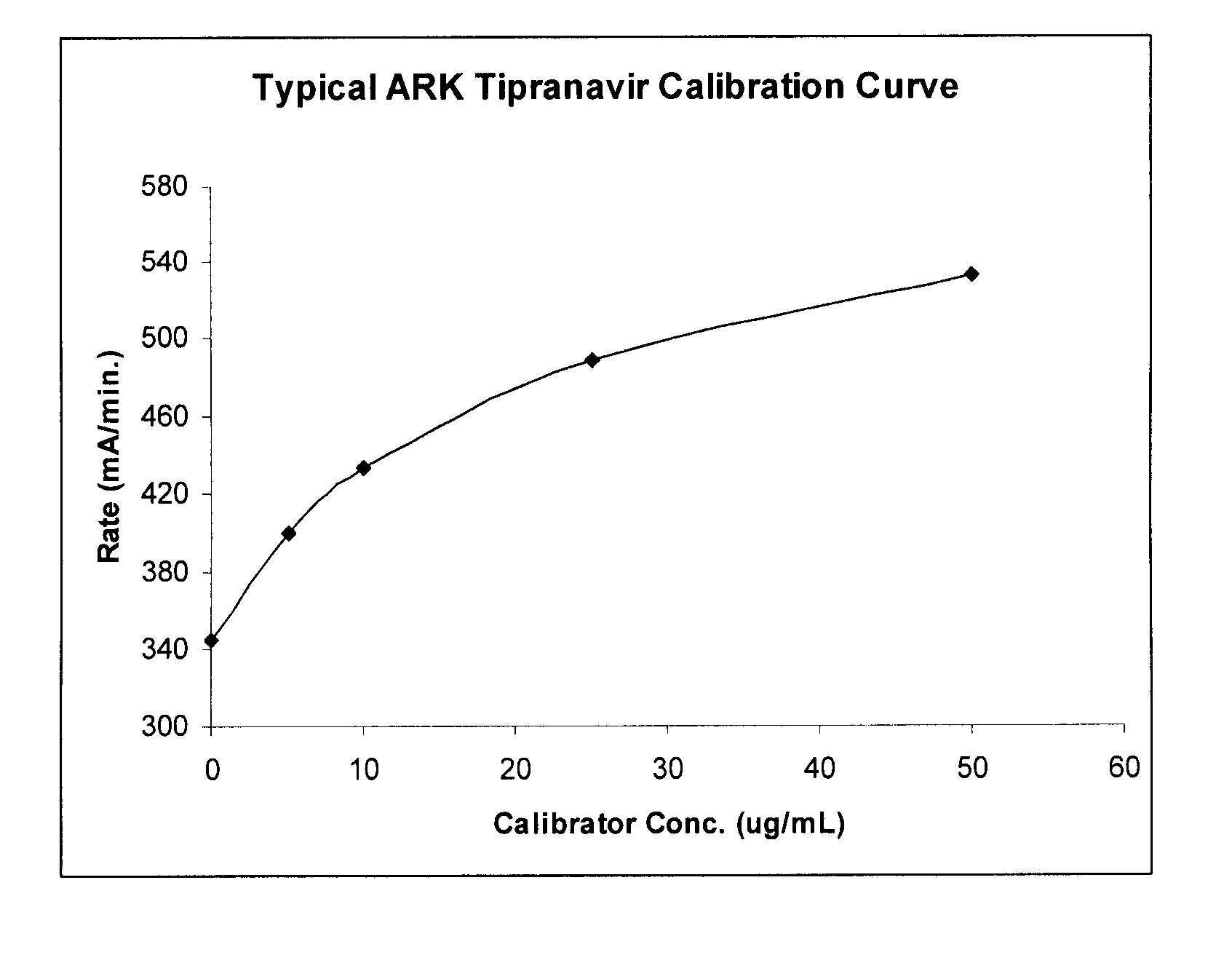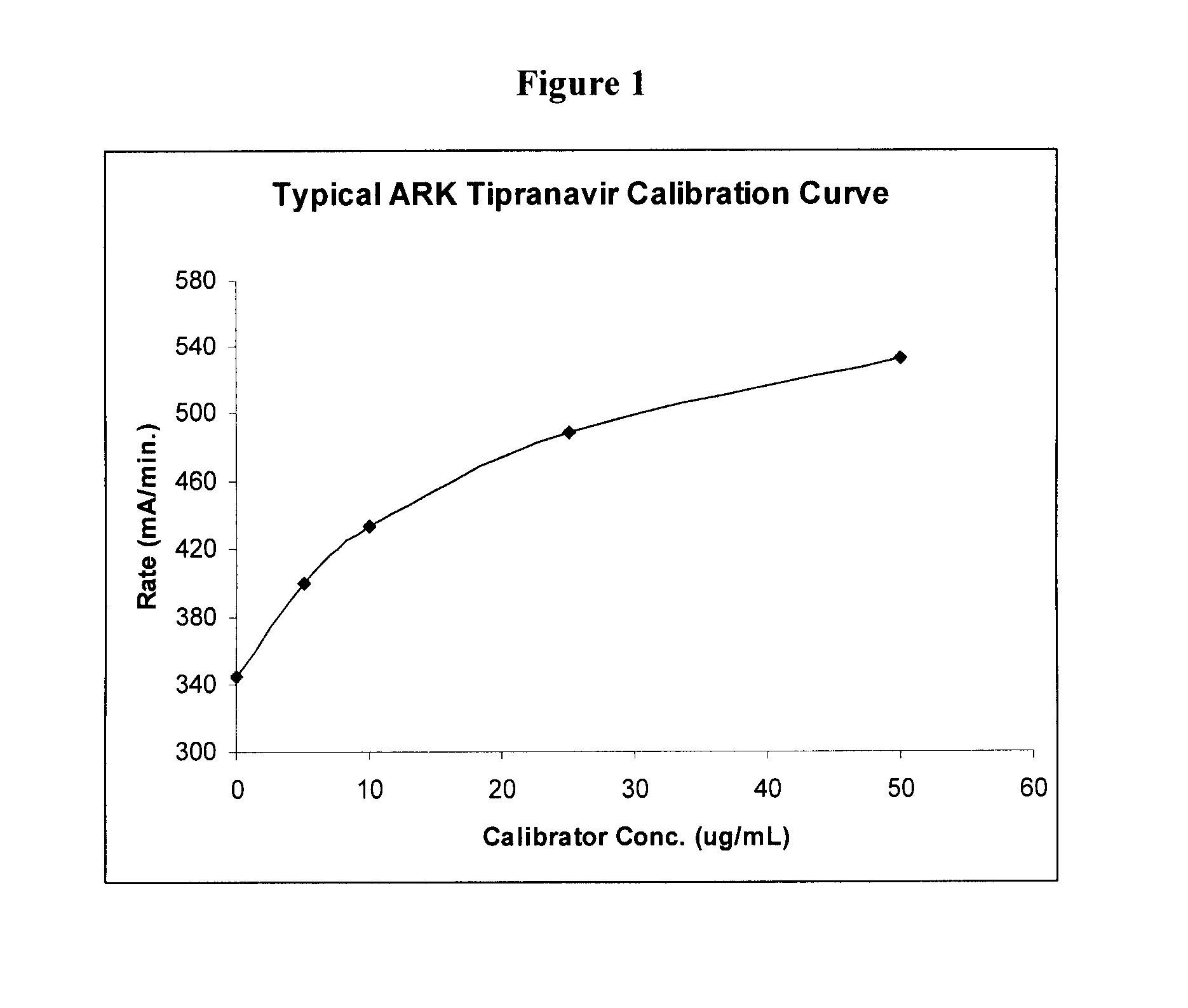Immunoassays, Haptens, Immunogens and Antibodies for Anti-HIV Therapeutics
a technology applied in the field of immunogens and antibodies for antihiv therapy, can solve the problems of not all patients respond optimally to the combination therapy for hiv, present serious health risks to patients, and destroy the body's immune system, and achieve the effect of inhibiting the propagation of hiv
- Summary
- Abstract
- Description
- Claims
- Application Information
AI Technical Summary
Benefits of technology
Problems solved by technology
Method used
Image
Examples
example 1
Preparation of a Hapten comprising Met-Sensitive Moiety (H3)
[0194] 1.1 Preparation of 11
[0195] To a stirred solution of ketone 10 (900 mg, 5 mmol) in THF (10 mL) was added the sarcosin Cbz (1.55 g, 7 mmol) under an argon atmosphere. To the solution was added sodium borohydride (360 mg, 10 mmol) portion wise over 3 h at rt. To the reaction was then added HCl (1%) dropwise until hydrogen gas no longer evolved. DCM (20 mL) and brine (20 mL) were added to the mixture. The organic phase was separated and washed with brine (3×10 mL) and dried (Mg2SO4). The solvent was then removed and the residue was purified on a silica gel column (DCM:ethyl acetate; 80:20) to give the pure product as a white solid (965 mg, 50%).
1.2 Preparation of 11
[0196] To a stirred solution of derivative 11 (772 mg, 2 mmol) in ethanol (5 mL) was added Pd / C (10%). The mixture was hydrogenated at atmospheric pressure over night. The reaction mixture was filtered through a pad of celite and the filtrate was evapo...
example 2
Preparation of a Hapten comprising Met-Sensitive Moiety (H4)
[0198] 2.1 Preparation of 15
[0199] 14 was prepared as discussed in Turner et al., J. Med. Chem, 41, 3467 (1998). To a stirred solution of 14 (520 mg, 2 mmol) in THF (5 mL) was added NaH (50% in oil, 100 mg, 2 mmol) at ice bath temp. After the hydrogen gas stopped evolving, a solution of the acrylate was formed (384 mg, 3 mmol). The reaction was stirred overnight and then DCM (20 ML) and brine (20 mL) were added. The organic phase was separated and washed with brine (3×20 mL) and dried (Mg2SO4). The solvent was then removed under reduced pressure to give crude 15 as a thick oil. The oil was further purified on a PTLC (silica gel, Hexane: ethyl acetate ; 40:60) to give pure 15 (194 mg, 50%) as a white solid.
2.2 Preparation of 16
[0200] To a stirred solution of compound 15 (195 mg, 0.5 mmol) in DCM (10 mL) was added TFA (1 mL) at 0° C. The reaction was stirred for 10 min. and then evaporated to dryness. The residue was th...
example 3
Preparation of a Hapten comprising Met-Sensitive Moiety (H5)
[0201] 3.1 Preparation of 2
[0202] To a stirred solution of the m-amino phenyl acetate 1 (1.65 g, 10 mmol) in THF (20 mL) and DIEA (2 mL) at ice bath temperature was added a solution the sulfonyl choloride (2.69 g, 1.1 mmol) in DCM (20 mL) dropwise over a period of 1 h. The reaction was then allowed to reach rt and then brine (30 mL) and DCM (40 mL) were added. The organic phase was separated and washed with water (3×, 40 mL) and dried (Mg2SO4). The solvent was evaporated under reduced pressure. The residue was then purified on silica gel column (MeOH:DCM, 5:95) 2 as a pale yellow solid (3.1 g, 82%).
3.2 Preparation of 3
[0203] To a stirred solution of compound 2 (1.87 g, 5 mmol) in MeOH (20 mL) and water (5 mL) was added sodium hydroxide solution (5N) to keep the pH at 11. The reaction was stirred for 4 h at rt. The pH was then adjusted to 3 by addition of a solution of HCl (5N). The solvent was then removed under the ...
PUM
| Property | Measurement | Unit |
|---|---|---|
| Fraction | aaaaa | aaaaa |
| Fraction | aaaaa | aaaaa |
| Fraction | aaaaa | aaaaa |
Abstract
Description
Claims
Application Information
 Login to View More
Login to View More - R&D Engineer
- R&D Manager
- IP Professional
- Industry Leading Data Capabilities
- Powerful AI technology
- Patent DNA Extraction
Browse by: Latest US Patents, China's latest patents, Technical Efficacy Thesaurus, Application Domain, Technology Topic, Popular Technical Reports.
© 2024 PatSnap. All rights reserved.Legal|Privacy policy|Modern Slavery Act Transparency Statement|Sitemap|About US| Contact US: help@patsnap.com










